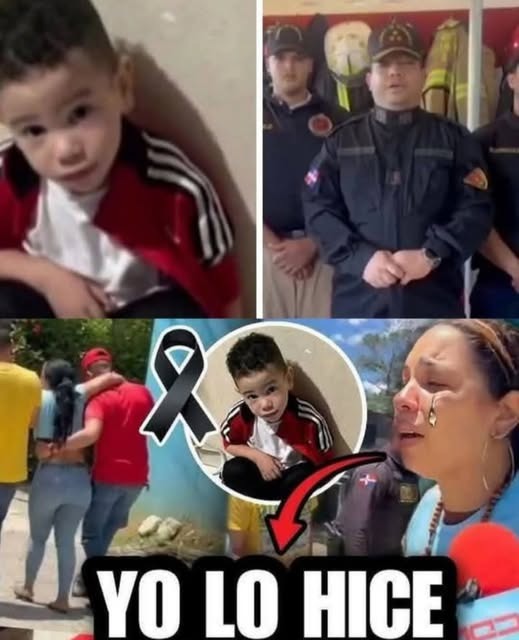How Law Enforcement Handles Missing Child Cases and Protects Families
When a child goes missing, every second matters. The fear, confusion, and uncertainty felt by parents and communities can be overwhelming — but behind the scenes, law enforcement agencies across the country follow carefully structured procedures designed to locate missing children as quickly and safely as possible. These coordinated efforts rely on training, technology, and community participation, ensuring that no case is left unattended.

The First Moments: Why Timing Is Critical
According to the U.S. Department of Justice, the first 24 hours after a child disappears are the most crucial. In this period, police prioritize gathering accurate details, interviewing witnesses, and securing the area where the child was last seen. The information collected — such as clothing descriptions, photos, and potential routes — forms the foundation for search operations.
Emergency dispatchers and local officers are trained to react immediately once a missing child report is filed. Contrary to popular belief, there is no mandatory waiting period to report a missing child in the United States. The National Center for Missing and Exploited Children (NCMEC) emphasizes that parents or guardians should call 911 right away if a child is believed to be in danger.

The Amber Alert System: A National Safety Network
One of the most effective tools in missing child cases is the AMBER Alert System, established in 1996 and named after Amber Hagerman, a young girl abducted in Texas. This network broadcasts urgent messages through television, radio, mobile phones, and highway signs whenever law enforcement determines that a child has been abducted and is in imminent danger.
To issue an Amber Alert, police must confirm that:
-
The child is under 17 years old.
-
There is reasonable belief that an abduction occurred.
-
The child is in serious danger of injury or death.
-
There is sufficient descriptive information about the child, suspect, or vehicle.
As of 2025, Amber Alerts have helped rescue over 1,200 children nationwide, showing how collaboration between media outlets, law enforcement, and the public can save lives.

The Role of Technology and Data Analysis
Modern investigations rely heavily on technology. Surveillance cameras, GPS data, and social media posts can all provide vital clues. Law enforcement agencies often work with digital forensic experts to trace cell phone activity, online interactions, or travel routes.
In addition, the FBI’s Child Abduction Rapid Deployment (CARD) Teams provide specialized expertise to local police departments. These teams analyze data, coordinate search patterns, and offer behavioral analysis to help predict where a missing child might be found.
Community technology also plays a part. Apps and digital alert systems allow residents to share verified information instantly, reducing misinformation and expanding the reach of urgent notices.
Supporting Families Through the Process
While police and rescue teams focus on the search, families face immense emotional strain. Many police departments now include family liaison officers or victim assistance coordinators who help parents navigate communication with investigators, media inquiries, and legal procedures.
Organizations such as the National Child Safety Council and NCMEC’s Family Advocacy Division also offer emotional support, counseling, and resources for affected families. These services help families maintain hope and understand what to expect as investigations unfold.
Preventive Measures: Teaching Safety Awareness
Preventing child disappearances begins long before an emergency occurs. Experts recommend that parents and caregivers teach children key safety principles such as:
-
Memorizing their full name, address, and a trusted phone number.
-
Knowing how to identify safe adults (teachers, police officers, store employees).
-
Establishing family rules about online activity and meeting new people.
-
Agreeing on a password system for pickups or emergencies.
Schools and local organizations increasingly include child safety education in their programs, emphasizing both online and physical safety. The rise of digital communication means children are often exposed to strangers through social media and gaming platforms — making open, ongoing dialogue between parents and children more important than ever.
When Neglect or Endangerment Is Involved
In some cases, missing child reports uncover underlying family or safety issues. When investigators find evidence of neglect or harm, the case shifts from a search operation to a child welfare investigation. Agencies like Child Protective Services (CPS) then become involved to ensure the child’s well-being.
It’s essential to remember that investigations take time and are guided by verified evidence, not speculation. Law enforcement agencies follow strict legal protocols to protect both the rights of the child and the accused, ensuring fairness and accuracy in every case.

Community Involvement and Public Responsibility
Communities play a vital role in both prevention and recovery. The simple act of sharing an official Amber Alert or calling in a credible tip can make a life-saving difference. Public awareness campaigns encourage residents to stay observant — especially around schools, playgrounds, and public transport areas.
In recent years, partnerships between police departments and community organizations have led to better training for volunteers, improved communication channels, and greater trust between families and local authorities. This shared vigilance forms a safety net that extends beyond law enforcement alone.
Media Ethics and Responsible Reporting
Media coverage can amplify a missing child case to a national level, but journalists are urged to follow ethical standards when reporting. The Society of Professional Journalists (SPJ) advises avoiding speculation, protecting minors’ identities, and prioritizing verified facts over sensationalism.
Accurate reporting not only supports investigations but also helps maintain community trust and prevents the spread of false information that can harm families or interfere with police work.
A Message of Hope
While every missing child case is heartbreaking, success stories remind us that coordinated action works. Many children are safely reunited with their families thanks to vigilant neighbors, alert police work, and the determination of entire communities.
For parents, the key takeaway is preparedness and awareness. For communities, it’s empathy and engagement. And for law enforcement, it’s the ongoing commitment to act swiftly, communicate clearly, and never give up until every missing child is found.
Sources
-
U.S. Department of Justice — Office of Juvenile Justice and Delinquency Prevention (OJJDP)
-
National Center for Missing and Exploited Children (NCMEC)
-
Federal Bureau of Investigation (FBI) — Child Abduction Rapid Deployment (CARD) Program
-
Amber Alert Official Website — amberalert.ojp.gov
-
Society of Professional Journalists (SPJ) — Code of Ethics
